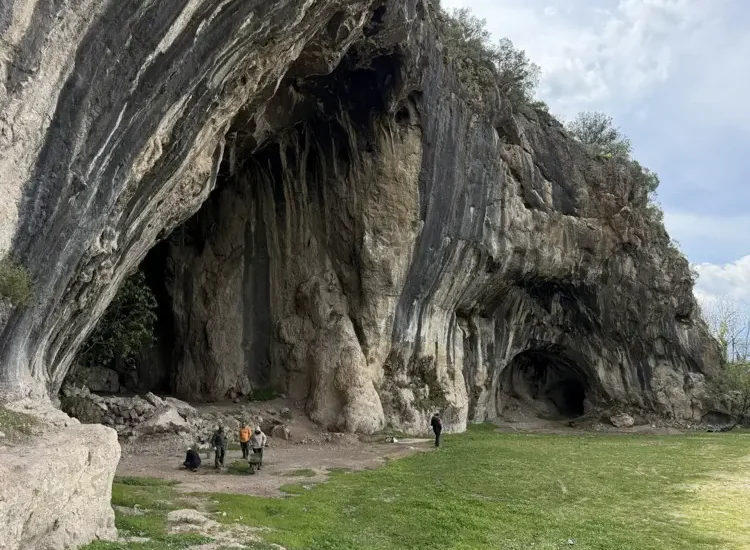
A New Study Illuminates How Neolithic Lifeways Spread from Anatolia to the Aegean and Europe
A sweeping new analysis published in Science is reshaping our understanding of how early farming traditions radiated outward from Anatolia. The study sheds light on long-debated questions about how Neolithic lifeways moved from Anatolia to the Aegean and eventually Europe, revealing a far more intricate story than the linear models once proposed. Western Anatolia as
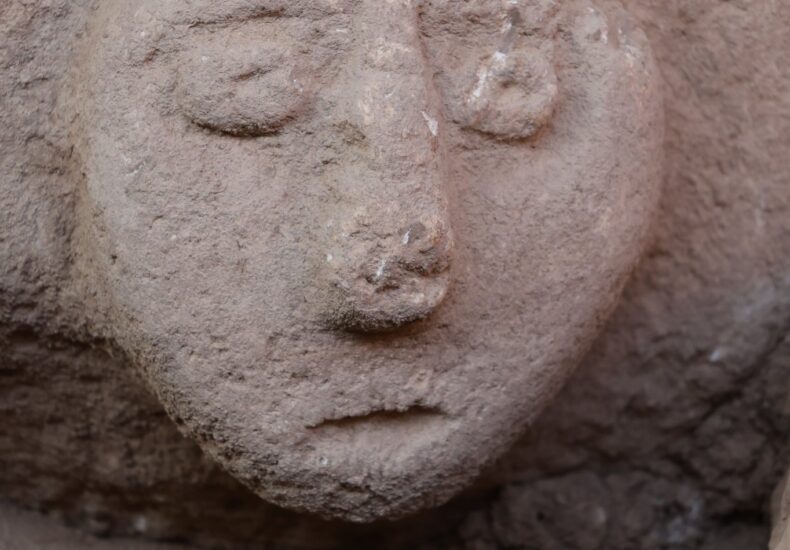
A New Wave of Neolithic Surprises at Taş Tepeler: Mysterious ‘Death Mask’ Sculpture Unveiled in Southeastern Türkiye
Human-like faces carved into stone, a rare double-sided bead, and an unsettling sculpture evoking the stillness of death—Türkiye’s vast Taş Tepeler region has revealed some of its most enigmatic Neolithic discoveries to date. The announcements came this week in Şanlıurfa, where the Ministry of Culture and Tourism shared 30 previously unknown finds that reshape current
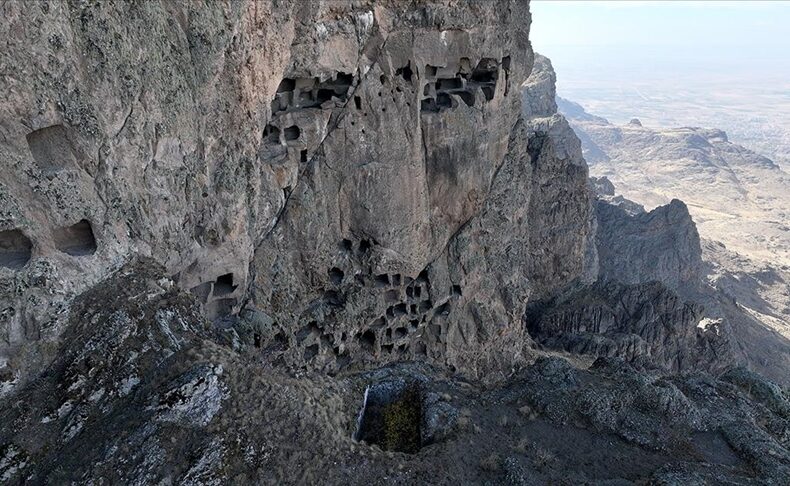
Was Öksüt Castle Once a Hittite Stronghold? Local Experts Reconsider the Origins of a Massive Rock-Cut Fortress in Central Anatolia
High on the southern slopes of Mount Erciyes, the vast rock-cut complex of Öksüt Castle dominates the landscape with a network of carved chambers, tunnels, cisterns, and multi-level passageways. Although long known to the local population, the fortress is once again drawing attention as scholars and heritage specialists revisit longstanding claims of a Hittite-era origin

Turkish Excavation Team Makes Major Progress at the Ancient City of Syedra
Syedra, rising above the Mediterranean on the steep ridges near modern Alanya, is undergoing one of the most dynamic archaeological transformations in southern Türkiye. Under the direction of Assoc. Prof. Dr. Ertuğ Ergürer of Alaaddin Keykubat University, the excavation project has advanced at an unprecedented pace, exposing large parts of the ancient settlement and reshaping

Rare Aramaic Inscription Discovered in Rural Ardahan Undergoes Expert Analysis in Kars Museum
A rare Aramaic inscription uncovered in a remote village in Ardahan has been transferred to the Kars Archaeology and Ethnography Museum, where specialists have begun a full epigraphic assessment. The stone, preserved in remarkably good condition, represents the first documented example of an Aramaic text from the Kars–Ardahan highlands — a discovery that is already

A Rare Find at Kastabala: Philosopher Mask Appears Where It Normally Shouldn’t
In the heart of southern Türkiye, a quiet corner of the ancient city of Kastabala has produced a discovery that breaks with what archaeologists normally expect from Roman stage buildings. A newly uncovered stone mask—depicting an elderly thinker with sharply modelled features—has emerged from the theatre’s façade. And according to the excavation team, philosopher masks
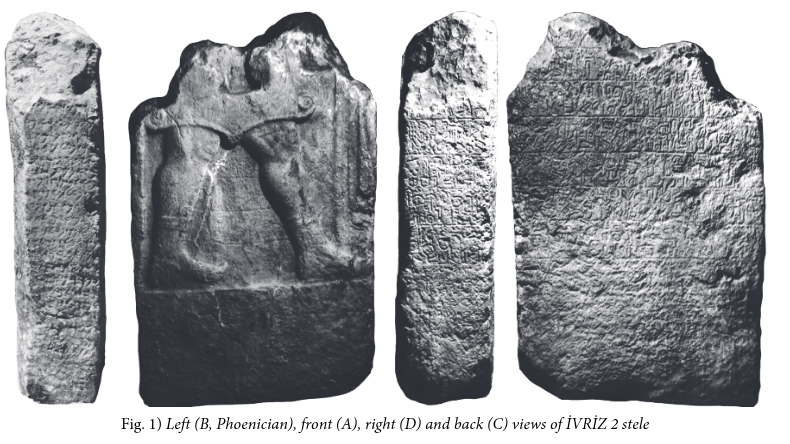
Luwian-Hittite Inscription Reveals the Ancient Name of the İvriz Spring for the First Time
A newly published epigraphic study has resolved a long-standing question regarding one of central Anatolia’s most prominent sacred water sites. The re-analysis of a Luwian-Hittite hieroglyphic inscription on a Tarhunza stele discovered near İvriz (Ereğli, Konya) in 1986 confirms that the spring’s ancient name was “Sallusa.”The findings, presented in the latest issue of Gephyra, provide
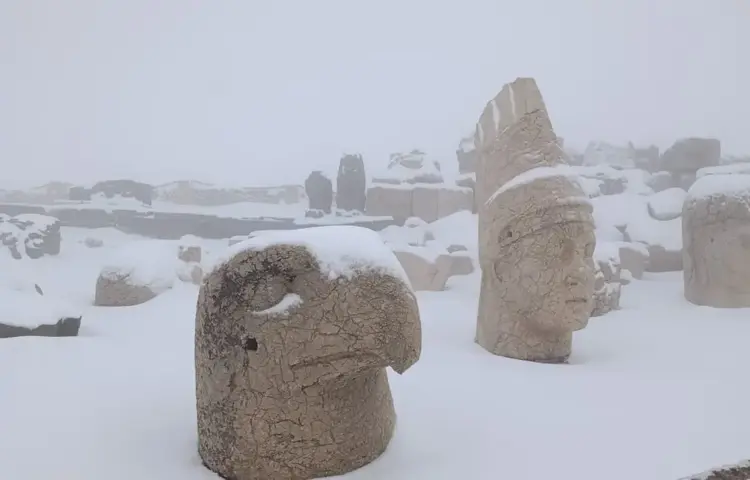
Nemrut Mountain Turns White: Ancient Colossal Statues Reveal a New Winter Face
A sudden wave of snowfall has transformed Mount Nemrut in Türkiye’s Adıyaman province into a stark winter landscape, giving the world-famous colossal statues a striking new appearance. Perched at 2,206 meters and listed as a UNESCO World Heritage Site, the mountain’s Hellenistic-era monuments—carved for the Kingdom of Commagene—took on an entirely different character under a
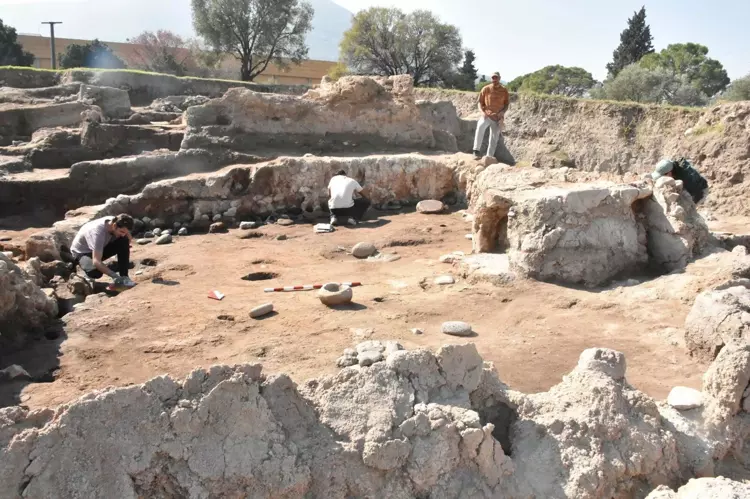
8,000-Year-Old Ceramic Workshop Unearthed in İzmir’s Ulucak Höyük Reveals Early Specialized Production
In the heart of modern industrial İzmir, surrounded by nearly 500 factories, archaeologists have brought to light a remarkable echo of humanity’s first producers. At Ulucak Höyük — the oldest known settlement in the region, dating back 8,850 years — a specialized ceramic production complex from 8,000 years ago has been unearthed. Led by Prof.

Before the Hittites: 8,000-Year-Old Rock Art Discovered in Central Anatolia
Archaeologists have discovered prehistoric rock engravings estimated to be around 8,000 years old in the Develi district of Kayseri, a region located in the heart of Central Anatolia. The discovery, now awaiting official registration, offers rare insight into one of the earliest symbolic traditions known in the region—long before the rise of the Hittite civilization.
